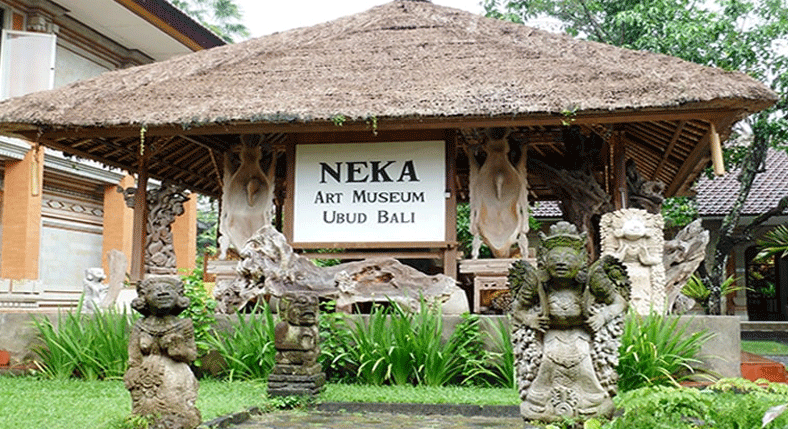
Neka Art Museum is a museum cum gallery established by Wayan Suteja Neka, an art lover based in Bali. It was inaugurated by the Ministry of Culture & Education in the year 1982 and built in 1976. Neka Art Museum has collection of sculptures and paintings across six different complexes spread in a garden landscape in Balinese style. The location is Kedewatan village on Jalan Raya Campuhan, in the northwest of Ubud centre. Book our Bali Museum Tour Package to explore more.
The six buildings in Neka Art Museum consist of collections of sculptures, paintings, and traditional Keris daggers – which later became personal collection by the founder, who seems to be a generation of pande clan of smiths in Bali and these are designed with traditional Balinese layout and architecture.
You may find variations in paintings here in the first building which has four exhibits. In Exhibit A, you can explore traditional Balinese paintings, including wayang paintings of Kamasan style which depicts the epics of Mahabharata and Ramayana, along with Balinese and Javanese legends and myths.
On the Exhibits B and C, you can explore paintings which have western influences in Ubud developed in 1920s and they later turned into Ubud-style paintings.
The Dutch painter Rudolf Bonnet and German artist Walter Spies brought the influence of their unique techniques in shadows, lighting, subject anatomy and perspectives. It has Batuan paintings in exhibit D.
The Arie Smit pavilion is the second building which is named after Adrianus Wilhelmus (Arie) Smit, a Dutch-born Indonesian painter based in Bali. It was established to admire the artist by Neka for playing vital role to develop Ubud arts.
There are two floors in the pavilion – first floor exhibits the works of young artists generated by Smit in 1960 ‘Young Artists Movement’, along with expressionistic, contemporary and abstract styles.
On the second floor, you can see Arie Smit’s work in different painting styles and themes depicting community life in Bali as well as imaginative renderings of nature scenes in Bali.
There are photographic exhibits in the third building. You can explore the archives of B/W pictures dating back to 1930s and taken by Robert Koke, who was one of the earliest American expats in Bali.
The Lempad pavilion is the fourth complex named after late Balinese architect and sculptor, Gusti Nyoman Lempad. It is well regarded for his distinct painting styles. His theme includes rural village life in Bali and epics and local legends.